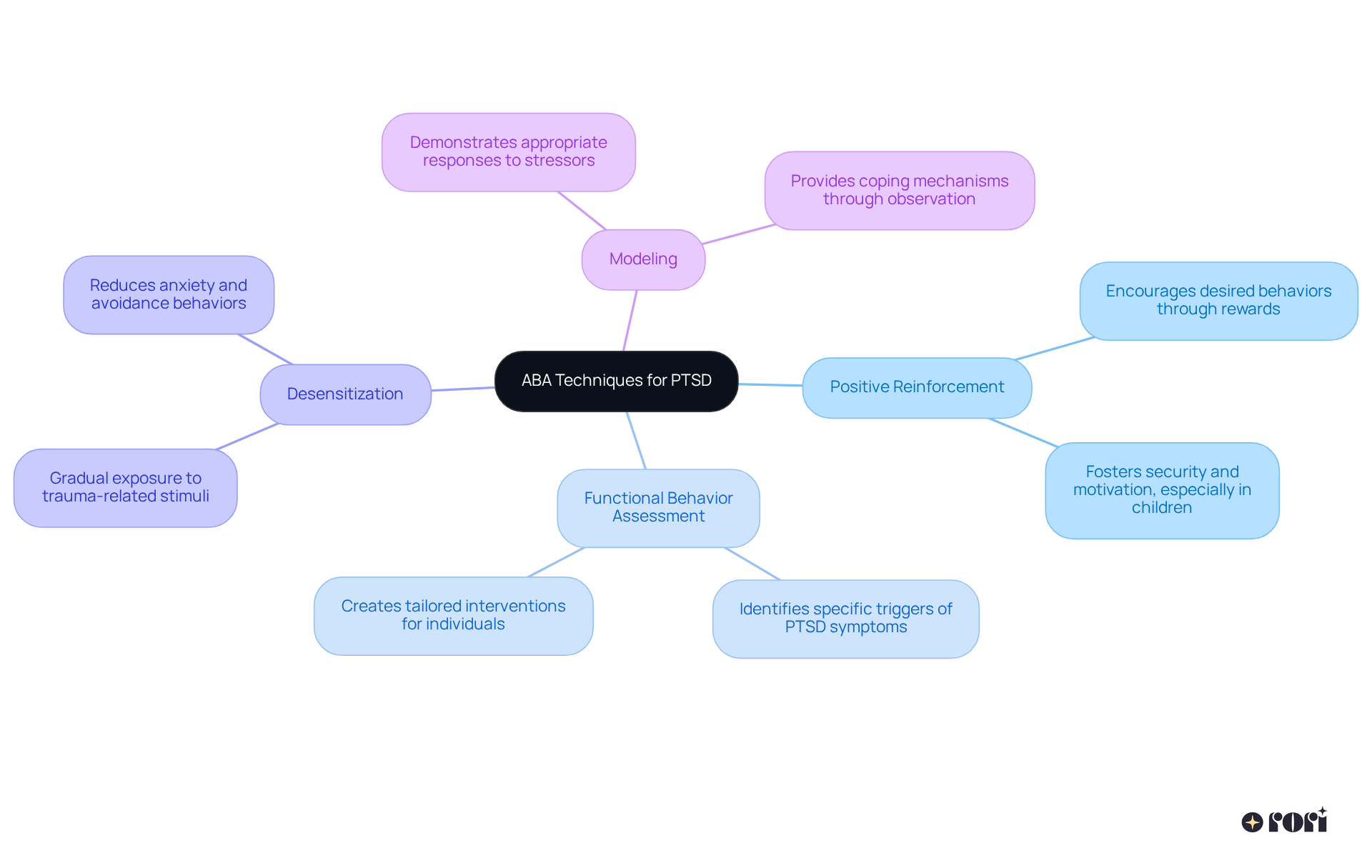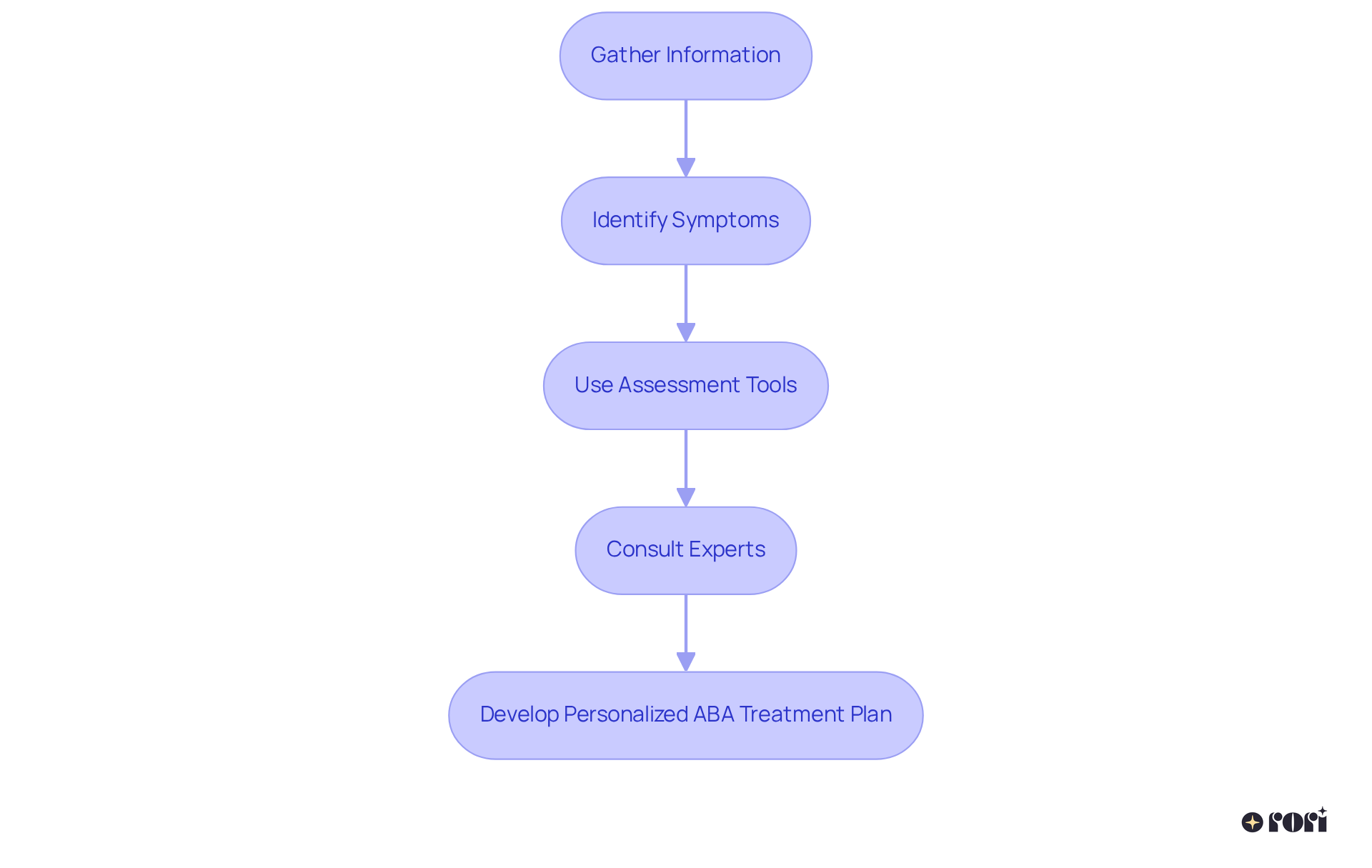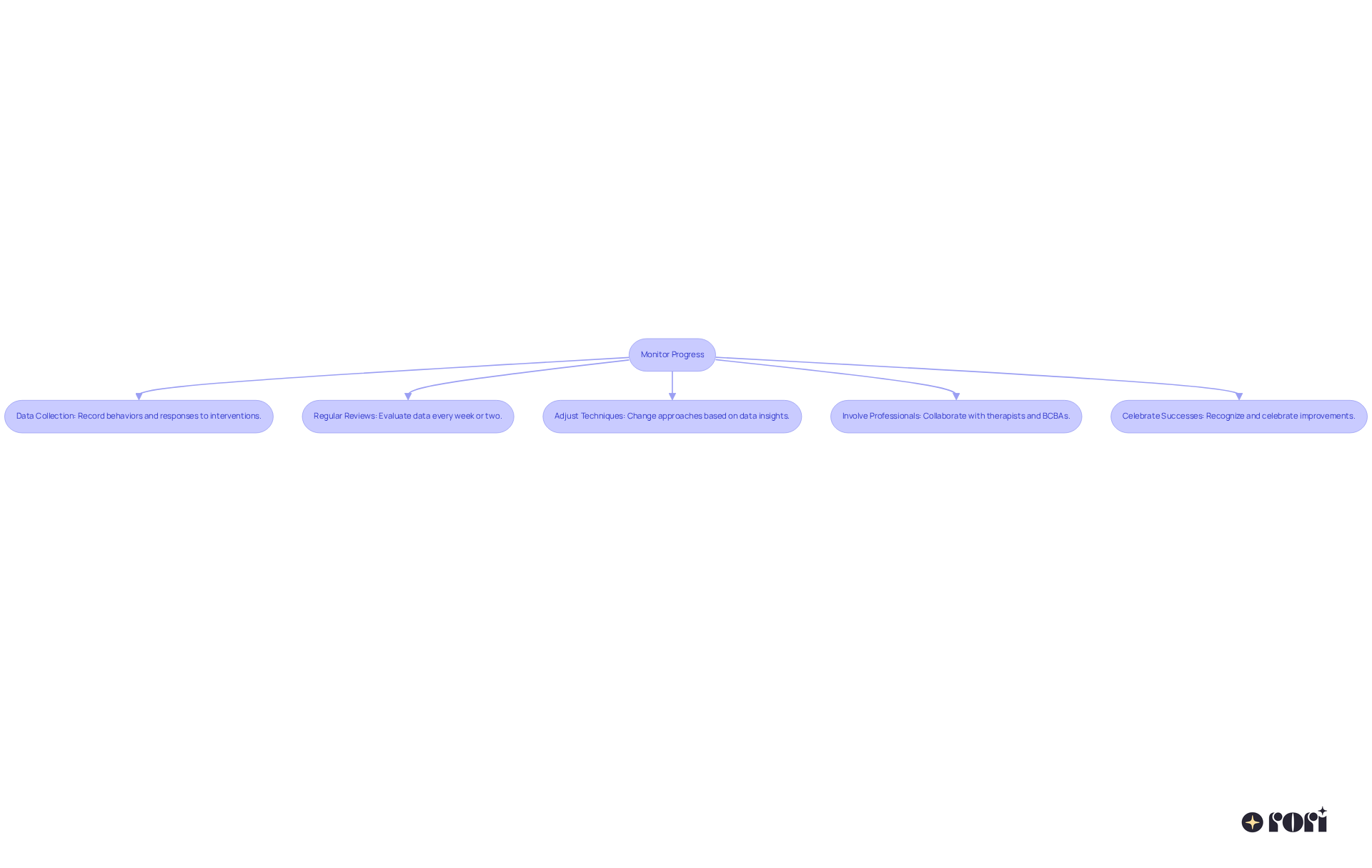This article highlights four essential steps to effectively use Applied Behavior Analysis (ABA) for managing PTSD in children. It focuses on:
By using methods like positive reinforcement, functional behavior assessments, and gradual exposure, we can see that tailored interventions can really enhance therapeutic outcomes and support children's emotional well-being. Let's explore this together!
As parents, navigating these challenges can feel overwhelming at times. But remember, you’re not alone in this journey. With the right approach and support, we can make a significant difference in our children's lives. We’re here to help you every step of the way!
Understanding the profound impact of trauma on children, especially those dealing with PTSD, highlights just how important effective therapeutic interventions are. Applied Behavior Analysis (ABA) provides a structured way to tackle behavioral challenges while also nurturing resilience and emotional growth.
As families begin this journey, a crucial question arises: how can we tailor ABA techniques to fit the unique needs of each child? This ensures they not only cope with their past but also thrive in the present.
Let’s explore this together!
Applied Behavior Analysis (ABA) is a therapeutic method designed to help change behavior through reinforcement techniques. It’s particularly effective for addressing the behavioral challenges that come with aba ptsd. Let’s take a closer look at some key ABA techniques that can really make a difference for those managing PTSD symptoms:
Understanding these methods is essential for parents and guardians, as they play a crucial role in supporting their children throughout the therapeutic journey. By actively engaging in these strategies and consistently applying them, families can create a more positive and effective treatment environment. Fostering a compassionate and encouraging atmosphere further enhances the therapeutic experience, helping young individuals thrive on their path to healing. Let’s explore this together!

Effectively managing aba ptsd in youngsters through therapy starts with understanding each child's unique needs and signs. Let’s walk through some important steps together:
Gather Information: It’s essential to collect insights from parents, teachers, and therapists. This helps us see how the child behaves in different settings. After all, kids can show different signs depending on where they are!
Identify Symptoms: Keep an eye out for common PTSD symptoms, such as:
Use Assessment Tools: Utilizing standardized assessment tools, like the Child Trauma Symptom Scale (CPSS), can really help us measure symptoms and track changes over time. These tools provide valuable insights into how the child is doing and help us monitor their progress. Interestingly, studies using DSM-V criteria report a higher PTSD prevalence of 38%, which highlights the need for accurate assessments.
Consult Experts: Don’t hesitate to reach out to mental health specialists! Their expertise can shed light on the child’s behavior and emotional state. It’s crucial that the evaluation meets the individual’s unique needs, especially since those who have faced trauma may need specialized support. Plus, parental involvement is key—parents who navigate trauma well can significantly boost their child’s recovery outcomes.
This thorough evaluation lays the groundwork for crafting a personalized ABA treatment plan tailored to the child’s unique challenges. Developmental psychologists emphasize that early intervention is vital; many youngsters continue to show symptoms of aba ptsd for years if not addressed.
Let’s explore this journey together! We’re here to help you every step of the way!

Once you've taken a moment to evaluate your child's needs, it's time to dive into some targeted ABA techniques. Let’s explore this together:
Create a Safe Environment: First things first, make sure your little one feels secure in their surroundings. This might mean reducing sensory overload and establishing consistent routines, both of which are crucial for kids who have experienced aba ptsd. A case study titled 'ABA Therapy for Trauma Management' shows just how much a safe environment can help reduce anxiety in young people.
Use Positive Reinforcement: Celebrate your child's positive behaviors, like expressing their feelings or facing their fears. You can use verbal praise, tokens, or small rewards to encourage this. Research shows that positive reinforcement can significantly boost emotional regulation and coping skills in kids with aba ptsd. As Jeridith Lord, LCPC, BCBA, puts it, "Understanding trauma has become a major focus for many different fields of mental health, with each proposing a different strategy for addressing traumatic symptoms and core issues."
Gradual Exposure: When it comes to trauma-related stimuli, take it slow. For example, if your child is scared of loud noises due to a past experience, start with soft sounds and gradually increase the volume as they become more comfortable. This technique has proven effective in helping kids manage their fears.
Teach Coping Skills: Help your child develop coping strategies, like deep breathing or squeezing a stress ball, to handle anxiety when faced with triggers. Teaching these skills can empower them to manage their emotions more effectively.
Monitor Responses: Keep an eye on how your child reacts to different methods and be ready to adjust your approach as needed. Ongoing observation is key to customizing interventions that meet their changing needs.
By applying these focused methods, you can support your child in navigating their challenges related to aba ptsd more effectively. We’re here to help you every step of the way!

Monitoring progress is so important when using ABA PTSD to help manage trauma in youth. Let’s dive into how you can effectively track and adjust your approach:
Data Collection: Keep thorough records of your child’s behaviors, how they respond to interventions, and any changes in PTSD symptoms. Try different data collection methods, like frequency and duration recording, to see how interventions are working. Visual tools like charts or logs can help you see progress over time, making it easier to spot trends and areas that need attention.
Regular Reviews: Make it a habit to check in regularly, ideally every week or two. This way, you can evaluate the data continuously and see how effective the methods are.
Adjust Techniques: Be open to changing your approach based on what the data tells you. If a technique isn’t working, don’t hesitate to explore other strategies or consider intensifying current interventions to better meet your child’s needs.
Involve Professionals: Team up with therapists or Board Certified Behavior Analysts (BCBAs) to gain insights into your child’s progress. Their expertise can really enhance the treatment plan and ensure it aligns with your child’s evolving needs. Plus, being involved in data collection can boost motivation and engagement for both you and your child.
Celebrate Successes: Don’t forget to recognize and celebrate improvements, no matter how small! Celebrating these milestones can inspire your child and reinforce positive behaviors, creating a supportive atmosphere for growth. Acknowledging small achievements is key to building confidence and encouraging ongoing effort.
By consistently monitoring progress and adjusting techniques as needed, while being aware of common challenges in data collection, you can provide your child with the best support in managing their aba ptsd. Let’s explore this together!

Applied Behavior Analysis (ABA) is a wonderful tool for managing PTSD in children, focusing on tailored interventions that meet each child's unique needs. By using techniques like positive reinforcement, functional behavior assessments, and gradual desensitization, caregivers can create a nurturing environment that promotes healing and resilience. Understanding these methods not only helps in addressing PTSD symptoms but also empowers families to actively engage in their child's therapeutic journey.
Key insights from this guide highlight the importance of thorough assessments to pinpoint specific symptoms and triggers related to PTSD. Working closely with mental health professionals, using standardized assessment tools, and keeping open communication with caregivers can greatly improve treatment outcomes. Plus, implementing targeted ABA techniques—like creating safe spaces, teaching coping skills, and regularly checking in on progress—ensures that interventions stay effective and responsive to the child's evolving needs.
Ultimately, managing childhood PTSD through ABA is a collaborative journey that calls for patience, understanding, and adaptability. By embracing these strategies, families can support their children in overcoming trauma while also instilling confidence and coping skills that will benefit them in the long run. Let’s explore this together! This proactive approach can truly make a difference in the lives of children facing the effects of PTSD, paving the way for a brighter and more resilient tomorrow.
What is Applied Behavior Analysis (ABA)?
Applied Behavior Analysis (ABA) is a therapeutic method designed to change behavior through reinforcement techniques, particularly effective for addressing behavioral challenges associated with PTSD.
What is positive reinforcement in ABA?
Positive reinforcement encourages desired behaviors by rewarding them, which fosters a sense of security and motivation, especially in children. Research shows it can significantly enhance therapeutic outcomes.
How does Functional Behavior Assessment work?
Functional Behavior Assessment identifies specific triggers of PTSD symptoms, allowing clinicians to create tailored interventions that meet the unique needs of each individual.
What is the desensitization technique in ABA?
Desensitization involves gradual exposure to trauma-related stimuli in a safe environment, helping to reduce anxiety and avoidance behaviors while allowing individuals to confront their fears at a comfortable pace.
How does modeling help in managing PTSD symptoms?
Modeling demonstrates appropriate responses to stressors, providing individuals with valuable coping mechanisms. Through observation, they learn to navigate challenging situations, which can reduce feelings of helplessness.
Why is it important for parents and guardians to understand ABA techniques?
Understanding ABA techniques is essential for parents and guardians as they play a crucial role in supporting their children throughout the therapeutic journey, helping to create a positive and effective treatment environment.